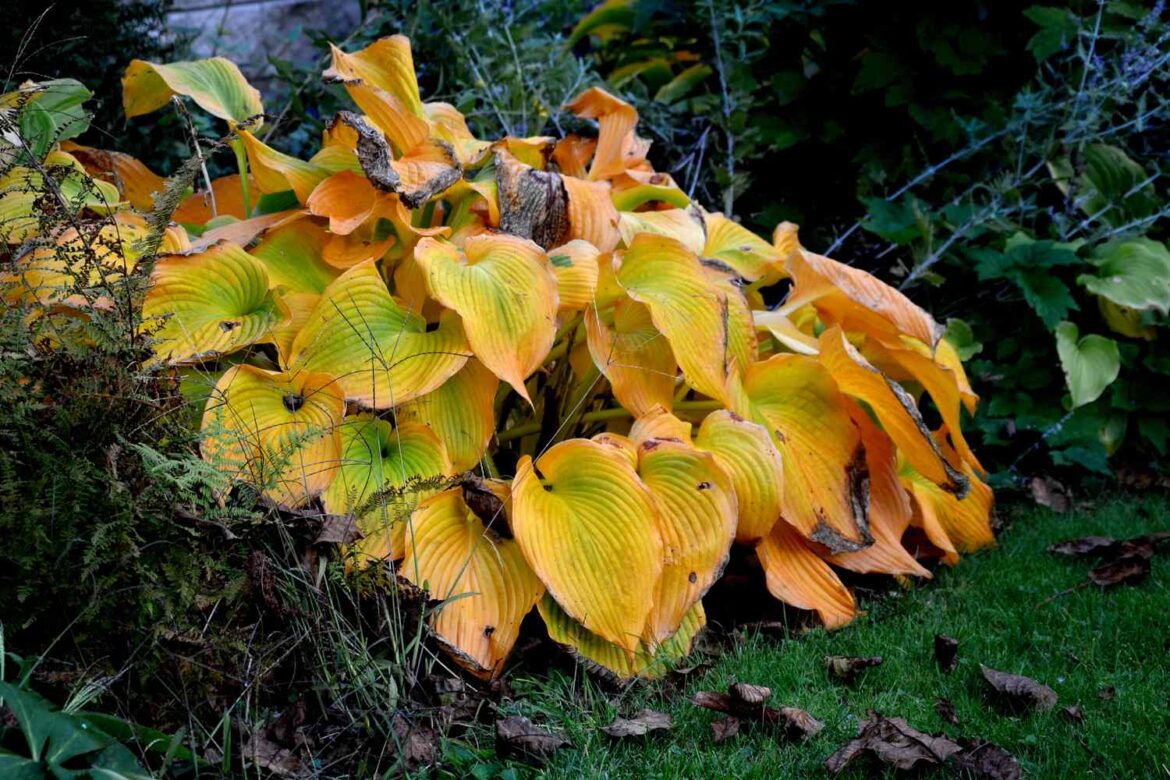Key Takeaways
Cut back hostas after the first hard frost to protect next season’s growth and avoid disrupting the plant’s natural energy cycle.Removing dead leaves in late fall helps prevent pests and disease, giving your hostas a healthier start in spring.Use clean shears to trim stems a few inches above ground, tidy up debris, and add mulch to protect roots through winter.
Gardeners love hostas for their “set it and forget it” maintenance schedule, and because these yard stars really know how to put on a spectacular show. Like many outdoor plants, though, their lush green foliage starts to fade once the weather turns chilly—this is when many gardeners give them a good trim.
Here, we asked gardening pros why cutting back hostas in late fall is so important and how to do it right so they come back thriving in spring.
Why You Should Cut Back Hostas After the First Frost
Gardening experts agree you should cut back hostas in late fall, just after the season’s first hard frosts. At this point, the leaves are turning yellow or brown and look limp. Cutting them back at this time—versus waiting for the spring—deters disease and pests so your hostas come back in the spring looking full and beautiful.
“It’s best to cut back hosta foliage before winter arrives, but you shouldn’t prune them too early in fall either,” says Paula Ramirez, a gardening expert for Gardino Nursery and Palmstreet. “Although it’s fine to cut off dead leaves anytime during the season, wait until the plant has died back to the ground after a hard freeze.”
Courtney Sixx, founder of Bouquet Box, confirms that the best timing usually happens between mid-October and late November. “When this occurs, it means the plant has completed its photosynthesis process,” Sixx says.
Why Cutting Hostas Back is Important
Cutting back your hostas is important for disease and pest control, and it ensures they will survive the winter season for healthy growth come spring. If you don’t trim them back, rodents and pests like slugs may use your droopy hostas as a hiding place.
“Not only does cutting back look nicer, it promotes healthier plants,” Sixx says. “This allows the energy of the plant to be put back into the root system, therefore making it healthier for the next growing season.”
How to Cut Back Hostas
After several frosts, or when temperatures remain consistently below 30°F, the leaves will die if you haven’t cut them back. At this point, you can clean up debris around the hosta crown or leave it until the following spring.
Here’s how to trim back hostas in the fall:
Cut at the base: Using sanitized, sharp pruning shears, cut the stems down to about two inches above the ground. Avoid cutting too close to the crown to prevent damage.
Tidy up the area: Gently rake away dead leaves and plant debris to reduce the risk of slugs and fungal diseases over winter. The area should look clean, tidy, and ready for spring growth.
Add a protective layer: If desired, after cutting and cleaning you spread a thin layer of mulch or shredded leaves around the base. This helps insulate the roots through winter and keeps moisture levels balanced until new shoots emerge.


Comments are closed.